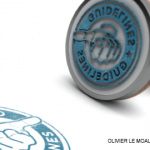ATLANTA—Therapeutic interventions that range from exercise to paraffin wax heat therapy may help many patients with hand, knee and hip osteoarthritis (OA) manage pain and improve function, according to a new clinical practice guideline due to be published online in Arthritis & Rheumatology and Arthritis Care & Research in late December or early January.1
Growing evidence supports numerous educational, behavioral, psychosocial and physical approaches to OA management, according to the guideline, which was co-sponsored by the ACR and the Arthritis Foundation. Investigators discussed the efficacy and safety of non-drug recommendations in the guideline, an update of the 2012 ACR recommendations, on Nov. 13 at the 2019 ACR/ARP Annual Meeting. Although several non-drug interventions received strong recommendations in the guideline, exercise had the most evidence to support its efficacy for patients with OA, including several large studies highlighted in the session.
7-Patient Panel Involved
The guideline was developed using the Grading of Recommendations Assessment, Development and Evaluation (GRADE) methodology, said Sharon Kolasinski, MD, professor of clinical medicine at the University of Pennsylvania Perelman School of Medicine, Philadelphia, who chaired the guideline’s core development team. Investigators used 536 published studies in the final evidence report. Input that reflects patient values and preferences was an important component of the development process, which included a seven-patient panel that met in August 2018. Two of those patients participated in the voting panel, which met in September 2018. Consensus agreement from at least 70% of voting panelists was required for recommendations to be included in the final report, said Dr. Kolasinski.
“Each intervention considered received either a strong or conditional recommendation. Strong recommendations for certain interventions suggest that there is compelling evidence of efficacy and that benefits clearly outweigh harms,” said Dr. Kolasinski. “In these cases, the voting panel was confident that desirable effects clearly outweigh harms and burdens to the patient. The suggestion is that a strong recommendation would apply to almost all patients.”
Exercise was the only intervention to receive a strong recommendation for use in all patients with OA. Strong recommendations against an intervention reflected panelists’ concerns about lack of efficacy and/or that its benefits may not outweigh harms, and conditional recommendations for a therapy reflected low- or very low-quality evidence to support its use.
‘It’s no surprise that exercise is a very strong recommendation. There is a large body of evidence to support exercise, & there is a wide range of options for patients.’ —Mr. White
Hand OA Recommendations
Exercise was a strong recommendation for hand osteoarthritis, said voting panelist Carole Dodge, OTRL, CHT, supervisor of the occupational therapy hand program, University of Michigan School of Medicine, Ann Arbor.2


